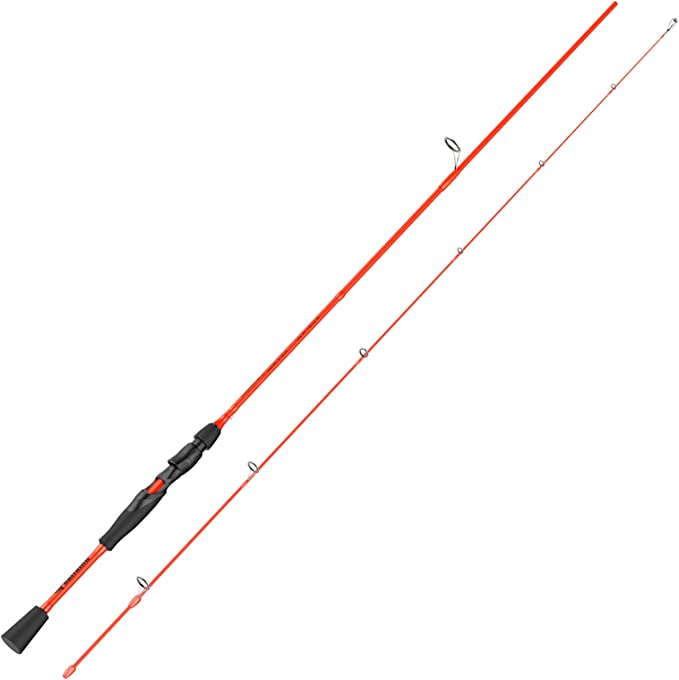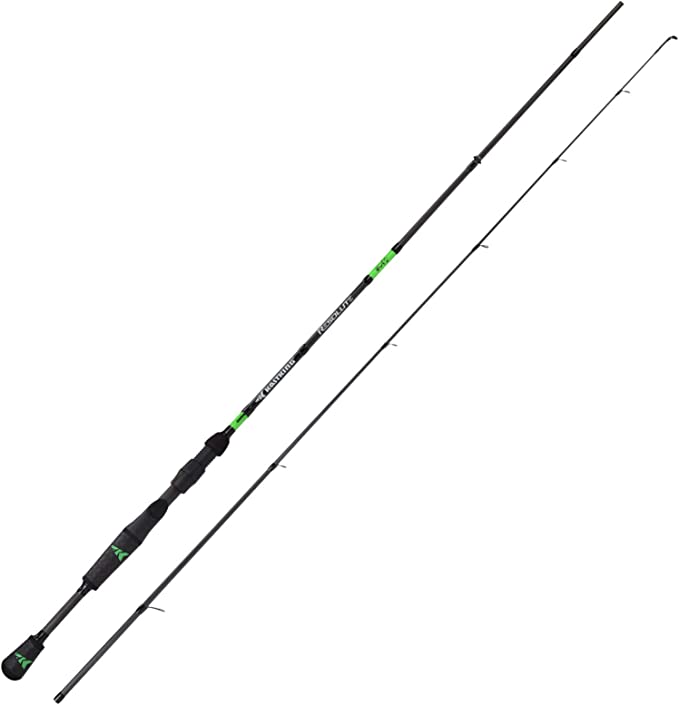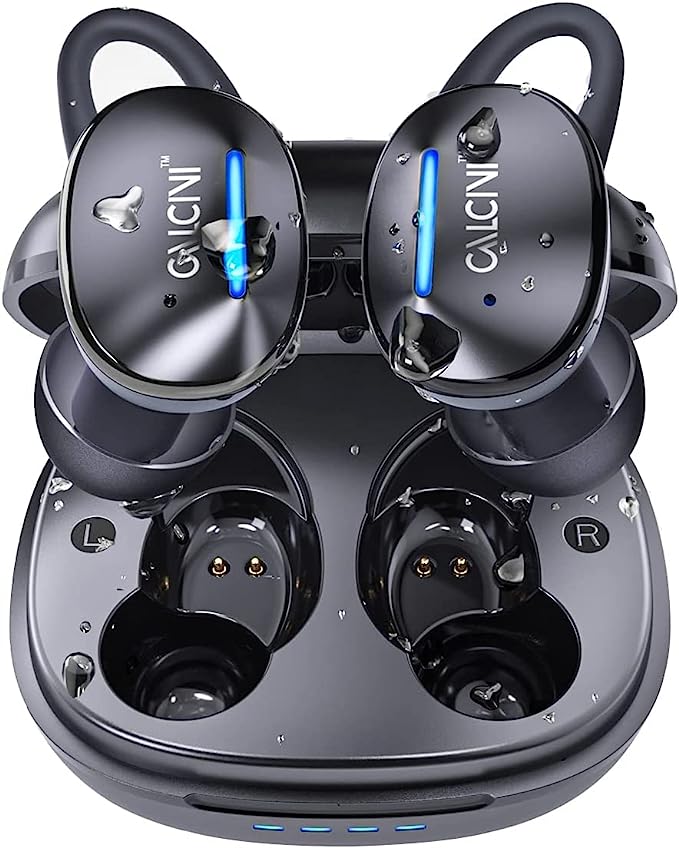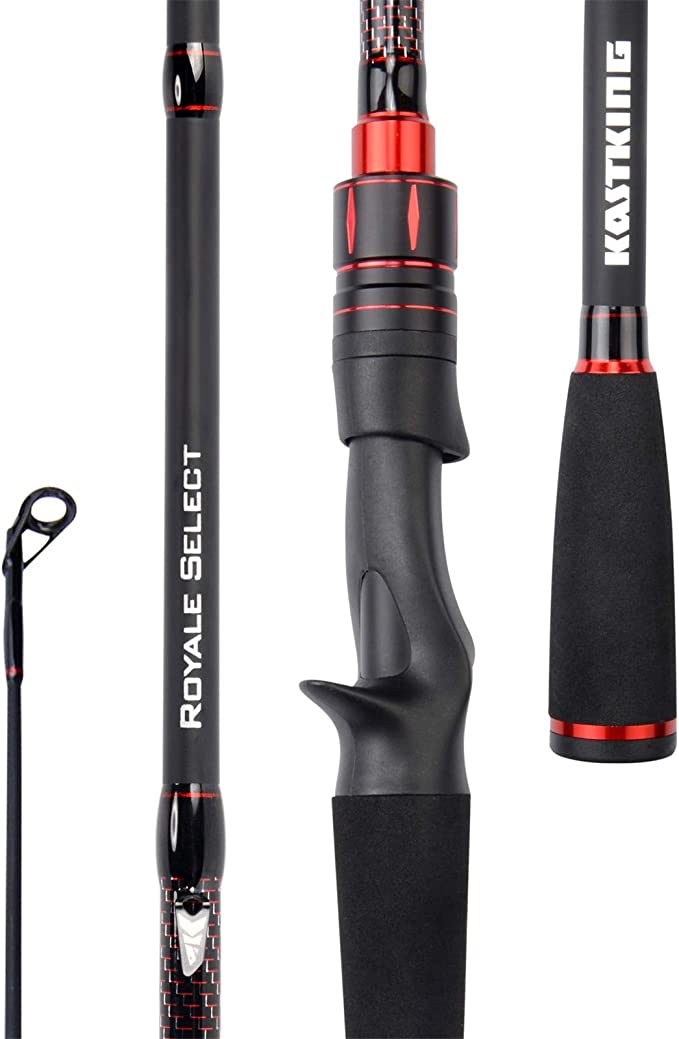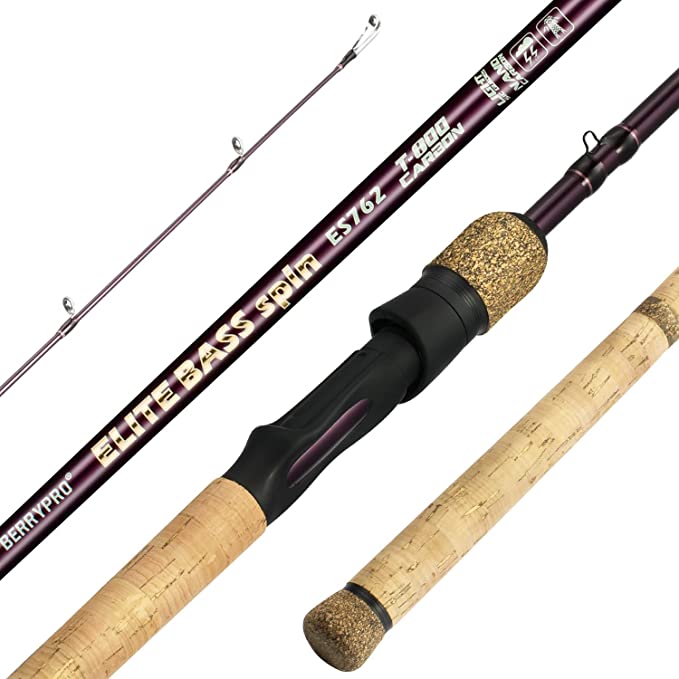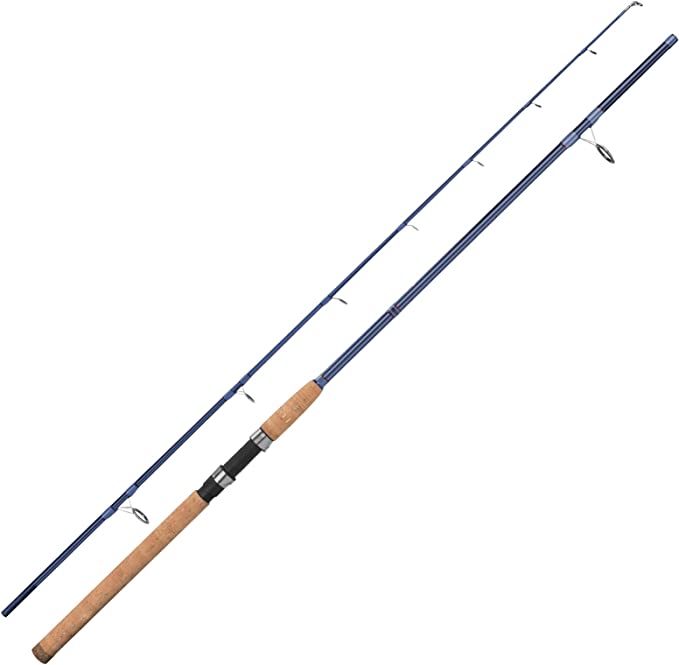The Physics of the $40 Rod: Engineering Value with IM6 Graphite
Update on Nov. 18, 2025, 8:24 p.m.
In the angling world, there is a pervasive myth: “Higher Modulus equals Better Rod.” Marketing materials bombard us with “30-ton,” “40-ton,” and “High-Modulus” labels, creating a perception that anything less is inferior. However, from a materials engineering perspective, the relationship between cost, performance, and durability is not linear; it is a trade-off curve.
The KastKing Crixus, built on an IM6 Graphite platform, represents a deliberate engineering choice to occupy the “Goldilocks Zone” of this curve. It is a study in how choosing the right material—not necessarily the most expensive one—can result in a tool that is arguably more functional for the average angler than a fragile, high-end instrument. To understand why, we must delve into the mechanics of carbon fiber composites and tribology.

The Modulus Myth: Why IM6 is Tougher
“Modulus” refers to the stiffness of the carbon fibers. High-modulus fibers are incredibly stiff and light, transmitting vibrations (sensitivity) efficiently. However, stiffness correlates with Brittleness. A high-modulus rod has a low strain-to-failure ratio; if you high-stick it or smack it against a gunwale, it shatters like glass.
IM6 (Intermediate Modulus) graphite, used in the Crixus, sits lower on the stiffness scale (typically around 33-40 million modulus). * Strain Energy: Because IM6 fibers are less stiff, they can stretch more before breaking. This allows the rod blank to absorb significantly more Strain Energy (shock) during a hookset or when a fish surges at the boat. * Durability: For the everyday angler who tosses rods in a truck bed or bushwhacks through cover, IM6 offers a toughness that high-modulus rods simply cannot match. It is the workhorse polymer composite compared to the race-car fragility of higher grades.
Tribology of the Guides: Zirconium Oxide
The most critical friction point in a fishing system is the line guide. As line creates friction against the ring, heat is generated. If the ring material is soft or rough, it abrades the line; if it conducts heat poorly, it weakens the line polymer.
The Crixus employs Zirconium Oxide (ZrO2) rings. In the field of tribology (the study of friction and wear), Zirconia is a technical ceramic with a hardness of ~8.5 on the Mohs scale (harder than hardened steel and quartz). * Heat Dissipation: Ceramics are generally thermal insulators, but Zirconia has a unique ability to accept a mirror polish. This ultra-smooth surface minimizes the coefficient of friction ($\mu$), thereby reducing heat generation at the source. * Line Safety: Unlike cheaper metal or plastic inserts, Zirconia will not groove under the sawing action of braided lines, preserving the integrity of the line over thousands of casts.

The “Dead Spot” Problem: Ferrule Mechanics
Multi-piece rods have historically suffered from “flat spots”—sections where the stiff ferrule (joint) interrupts the natural parabolic bend of the rod. This creates a stress concentration point where breakage is likely and dampens vibration transmission.
KastKing’s Power Transition System (PTS) is an engineering solution to this continuity problem. By designing a Spigot Ferrule or a precision-tapered slip-over joint, the system ensures that the flexural stiffness ($EI$) across the joint remains constant. * Stress Continuity: When the rod loads up, the stress wave travels through the ferrule without hitting a “wall.” This mimics the behavior of a one-piece blank, allowing the angler to feel a bite even through the joint.
The Interface: SuperPolymer vs. Cork
Traditional cork is comfortable but organic; it rots, absorbs slime, and degrades. EVA foam is durable but dampens sensitivity. The SuperPolymer handle on the Crixus is a synthetic elastomer engineered for high coefficient of friction even when wet (hydrophobic surface properties). * Haptic Feedback: Unlike soft EVA which absorbs vibrations, denser polymers can transmit high-frequency vibrations from the blank to the hand, maintaining the sensitivity chain started by the IM6 graphite.

Conclusion: Engineering for Reality
The KastKing Crixus is not a tournament rod designed to detect a fish breathing on a lure at 60 feet. It is an instrument engineered for the reality of recreational fishing. By prioritizing the toughness of IM6 graphite over the fragility of high-modulus fiber, and utilizing industrial ceramics for line management, it offers a masterclass in Value Engineering. It proves that performance is not just about raw specs, but about matching the material properties to the actual use case of the angler.
